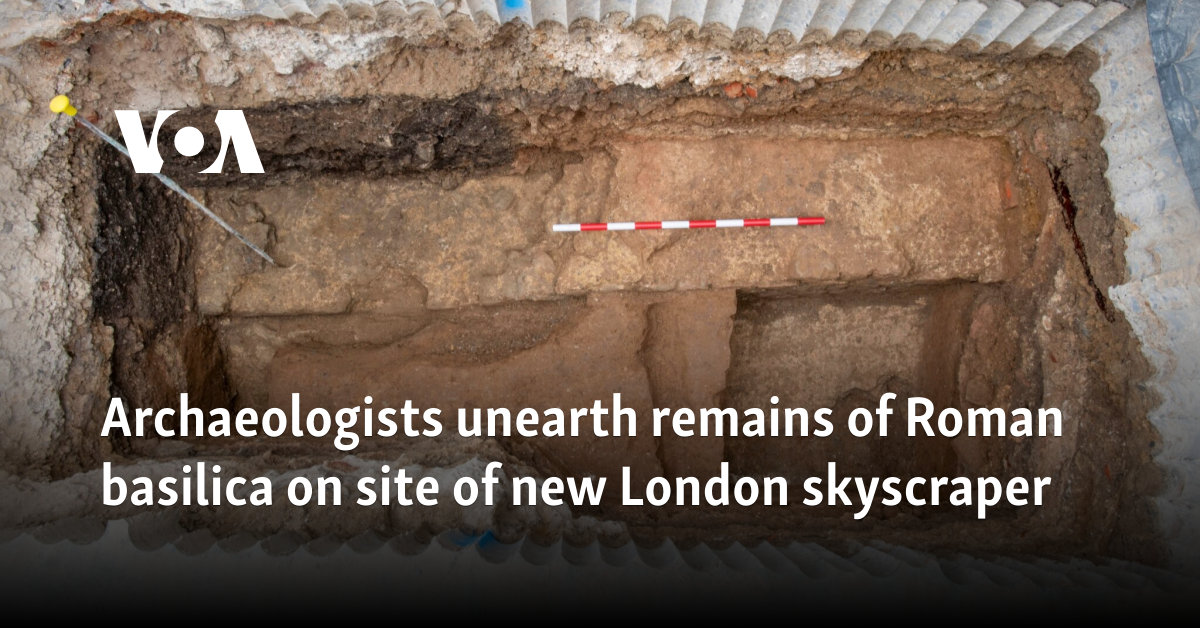
Archaeologists unearth remains of Roman basilica on site of new London skyscraper
Voice of America
A view of part of the wall of the Roman London Basilica, which has been recently unearthed by a redevelopment of a building in London, is seen in this photo provided by the Museum of London Archaeology taken in summer 2024. A drawing of a representation of the Roman London Basilica, which has been recently unearthed by a redevelopment of a building in London, is seen in this photo provided by Peter Marsden. A view of part of the wall of the Roman London Basilica, which has been recently unearthed by a redevelopment of a building in London, is seen in this photo provided by the Museum of London Archaeology taken in summer 2024.
Work to give 21st-century London yet another skyscraper has uncovered traces — in fact chunks — of the city's origins almost 2,000 years ago.

FILE - Leonhard Seppala and his sled dog team pictured on Oct. 12, 1928, in Alaska. In 1925, Seppala was part of the nearly 700-mile relay of mushers and dog teams to get diphtheria antitoxin to Nome, Alaska, during a deadly outbreak of the disease. FILE - Gunnar Kaasen poses with his original dog team — including his lead dog Balto, top row, second left, in 1925 — which he drove through a blinding blizzard to deliver lifesaving serum, in Nome, Alaska. FILE - Gunnar Kaasen and his dogsled team leader Balto pose for a portrait in the early 1920s. FILE - The statue erected to honor "Balto" and other heroic sled dogs who carried serum to Nome, Alaska, through an Arctic blizzard is covered in snow in New York's Central Park, Dec. 11, 1947.












